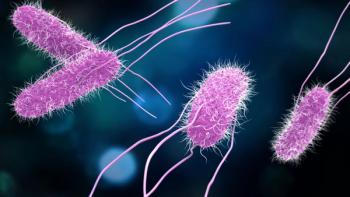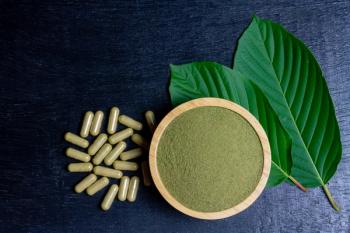
6 Tips for Introducing Peanut-Containing Foods to Young Children
Pharmacists may be receiving more questions from parents about how to introduce peanut-containing foods to infants, as new guidelines recommend early initiation to prevent allergies.
Pharmacists may be receiving more questions from parents about how to introduce peanut-containing foods to infants, as new guidelines recommend early initiation to prevent allergies. This is a change from the previous guidelines, which recommended avoiding peanut-containing foods in children at risk for developing allergies until 3 years of age. There are 3 separate guidelines for infants at different risk levels for developing peanut allergies along with different peanut protein recipes.1
Check out these 6 tips for introducing peanut-containing foods to infants.
Children younger than 5 years of age should not consume whole peanuts. Children younger than 5 years of age are at risk of choking on whole peanuts and can also be at risk for aspiration. Peanut butter should also not be given in large quantities directly from a spoon to children less than 4 years of age.
Infants with severe eczema, egg-allergy, or both should receive peanut-containing foods at 4-6 months of age.1 Other solid foods should be introduced first to ensure that the infant is developmentally ready. Parents should check with the pediatrician first, as their child may need allergy testing prior to starting peanut-containing foods. Infants can receive about 6 to 7 grams over 3 or more feedings of peanut protein per week once it is determined to be safe to give at home due to a low risk of an allergic reaction.1 Infants may also receive their first taste of peanut butter at an in-office supervised feeding if testing reveals possible sensitivity to peanuts.
Infants with mild-to-moderate eczema can receive peanut-containing foods at approximately 6 months of age.1 The guidelines recommend that other solid foods be introduced prior to peanut-containing products to ensure that the infant is developmentally ready. Infants with mild-to-moderate eczema can receive peanut-containing foods at home without an evaluation.
Infants without eczema or any food allergies can have peanut-containing foods introduced freely into the diet.1 It is still generally best to introduce other solid foods first prior to initiating peanut-containing foods. Peanut-containing foods can be introduced at home, and the risk of allergy is low.
Monitor infants for signs of an allergic reaction. Pharmacists can provide important counseling points such as giving the first peanut feeding at home and not at a day care facility or restaurant. Parents can offer infants a small portion of the peanut serving on the tip of a spoon and wait 10 minutes.1 If there is no allergic reaction after the small taste, then the remainder of the peanut-containing food can be given. Educate parents to spend at least 2 hours with the infant after the feeding to watch for the following signs of an allergic reaction: rash, hives, lip swelling, vomiting, face or tongue swelling, difficulty breathing, wheezing, repetitive coughing, blue skin color, and lethargy.1 Educate parents to contact the pediatrician if their infant develops mild allergic symptoms such as a new rash or a few hives around the mouth or face within 2 hours of consuming peanut-containing foods for at least one week.1 Parents should seek emergency medical attention for severe allergic reactions.
Four recipes provide safe ways to administer peanut protein to infants. The guidelines recommend 4 different options for introducing peanut-containing foods to infants.1 Bamba is a peanut-butter puffed corn snack that was also used in studies. Bamba should be softened with 4 to 6 teaspoons of water for infants less than 7 months. The guidelines also recommend thinned smooth peanut butter as the second option. Parents can measure 2 teaspoons of peanut butter and slowly add 2 to 3 teaspoons of hot water. The mixture should be stirred until peanut butter is dissolved and well blended, and cooled before administering. The third recipe is a smooth peanut butter puree that involves mixing 2 teaspoons of peanut butter with 2 to 3 tablespoons of pureed tolerated fruit or vegetables. The fourth option includes mixing 2 teaspoons of peanut flour or peanut butter powder with 2 tablespoons of pureed tolerated fruit or vegetables.1
Reference
- Togias A, Cooper SF, Acebal ML, et al. Addendum guidelines for the prevention of peanut allergy in the United States: Report of the National Institute of Allergy and Infectious Diseases-sponsored expert panel. J Allergy Clin Immunol. 2017;139:29-44.
Newsletter
Stay informed on drug updates, treatment guidelines, and pharmacy practice trends—subscribe to Pharmacy Times for weekly clinical insights.


















































































































































































































